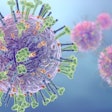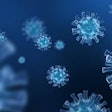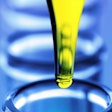
It remains to be seen whether the much-covered monkeypox scare will turn out to be a significant crisis, a moderate concern of the likes of Zika, or just a media story of exaggerated importance. But one thing is clear: lab testing for the monkeypox virus is not a concern.
The monkeypox virus is a relative of the smallpox virus that's weaker in severity and transmission than smallpox and that can be detected with PCR. The first draft genome from a swab of a confirmed case was published last week; this will allow the development of PCR tests for detecting the virus from scabs or blisters of potentially infected people. Testing is already available at the U.S. Centers for Disease Control and Prevention (CDC) and in major world laboratories. At least one IVD vendor has acted promptly with this disease event: on Wednesday, May 25, Roche Diagnostics announced it has launched a monkeypox PCR test.
Kalorama Information (sister publication of LabPulse.com) suggests in its most recent report that the market for tests for emerging infections -- that is, infections that are not routinely tested for in high-income nations -- could be worth up to $400 million per year by the end of the decade.
 Bruce Carlson from Kalorama Information
Bruce Carlson from Kalorama InformationThe reason behind this is that there are quite often surprising infectious disease threats arriving in healthcare venues. The monkeypox virus is officially a sylvatic zoonosis -- in lay terms, a wild animal virus. It is not new, and in very rare cases has even been seen before in the U.S.
Despite its name, monkeypox is harbored in and spread by rodents that are descendants of rodents likely infected by a group of laboratory monkeys in the 1950s, from which the name originated. The first human case of monkeypox was reported in 1970. As with the Zika virus, the reason for the attention to monkeypox is not that it is new, but rather that it is reaching countries where it is not endemic.
There are currently almost 200 confirmed and suspected cases of monkeypox associated with the recent outbreak across the world. The disease has been confirmed in Sweden, Italy, Germany, Belgium, France, Canada, and Australia. Symptoms can be mild or severe, and lesions can be very itchy or painful.
Other parts of the world are no stranger to the disease. Nigeria, for instance, saw 558 suspected cases from September 2017 to April 2022; half were confirmed and eight deaths resulted, per statistics from the World Health Organization (WHO). So far this year, 46 cases have been reported and no deaths have been recorded in Nigeria.
In terms of testing, on May 21 the WHO released guidelines for testing which indicate that confirmation of monkeypox virus infection is based on nucleic acid amplification testing (NAAT), using real-time or conventional PCR for detection of unique sequences of viral DNA. PCR can be used alone, or in combination with sequencing. The guidelines say that the recommended specimen type for laboratory confirmation of monkeypox is skin lesion material, including swabs of the lesion surface and/or exudate, roofs from more than one lesion, or lesion crusts.
Given the severity of the COVID-19 pandemic and increased awareness of viral pandemics in general, WHO also noted the following: "It is recommended that all manipulations of specimens originating from suspected, probable, or confirmed cases of monkeypox in the laboratory be conducted according to a risk-based approach."
The monkeypox virus differs from COVID-19 in several ways:
- It is transmitted by contact rather than respiratory fluids.
- Initial reports indicate the transmission rate is fairly low.
- It transmits via contaminated surfaces or prolonged proximity with other people.
In addition, the disease is arriving at a time of high precaution and adequate supplies of personal protective equipment (PPE), and there are vaccines available for monkeypox. WHO has approved a specific vaccine for monkeypox; the traditional smallpox vaccine also provides protection. However, smallpox vaccines are not widely available at medical facilities, which would have to receive shipments from government stockpiles. Furthermore, populations worldwide under the age of 40 or 50 years no longer benefit from the protection afforded by prior smallpox vaccination programs.
What's behind the sudden reappearance of monkeypox? There are many theories right now. The uptick could be a fluke, or it could be a predictable increase: scientists have predicted monkeypox virus might rise because we eradicated its relative, smallpox, in the late 1970s.
There's also a theory that increased cases are the result of people traveling more after global COVID restrictions were lifted. Right now, healthcare organizations and governments are watching, but initial reports are that there hasn't been a significant mutation that's increased the strength of the virus.
As with the COVID-19 epidemic, the clinical laboratory and IVD industry stands ready; in fact, given the equipping of labs with advanced and automated molecular equipment, there's more testing capacity in the U.S. than ever.
If nothing else, the growing attention on monkeypox will be a test of current laboratory capacities and supply chains, and a useful reminder of the need for preparedness, as Kalorama Information remarks in its latest Infectious Disease Diagnostic Testing: World Market Analysis market report.
Monkeypox may not represent a new COVID-19-like pandemic, but the periodic appearance of new and recurring life-threatening pathogens will underlie gains by creating a need for new IVD and research tools.
Bruce Carlson is the publisher of Kalorama Information, part of Science and Medicine Group.
Disclosure: LabPulse.com is a sister company of Kalorama Information.



















